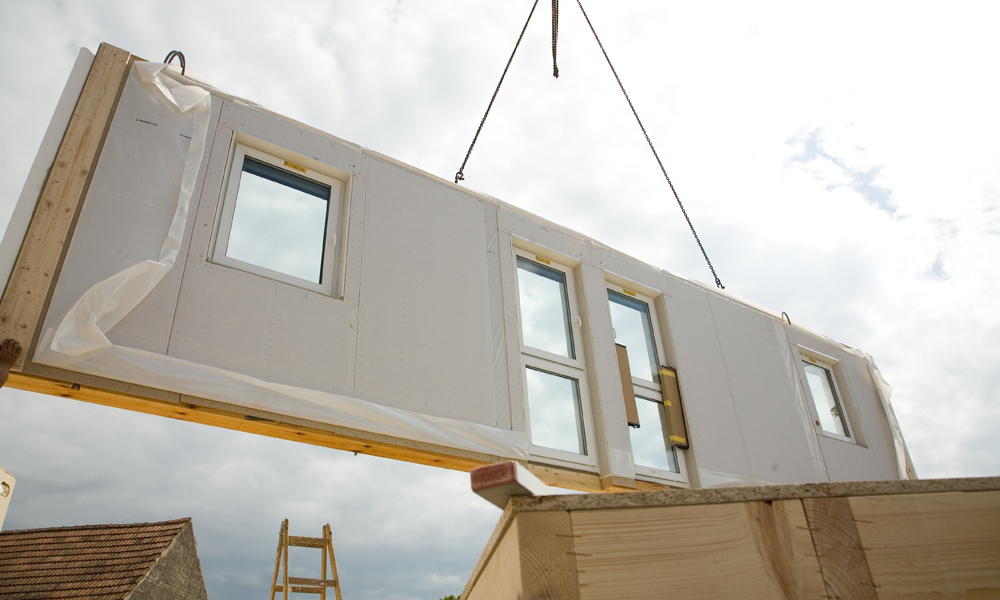Technological Advancements Impacting Construction
Below are ten construction technologies that Professor Ibrahim Odeh expects to have an impact on the industry over the next decade or so. The Professor is Research Director and Founder of the Global Leaders in Construction Management (GLCM), Department of Civil Engineering and Engineering Mechanics, Columbia University, New York City. Last January, he discussed these technologies at a briefing sponsored by GoContractor and the Construction Industry Federation (CIF). All ten of them can help boost construction productivity, efficiency, safety.1. Advanced building and finishing materials for construction industry technology
This new generation of building and finishing materials can improve overall performance and functionality. For example, smart building materials such as smart concrete, shapeshifting metals, and self-heating coatings respond to temperature, pressure, and the presence of oxygen. Additional advanced materials worth watching are magnetostrictive, piezoelectric, and electrochromic materials and electrorheological fluids. Just some of the benefits include ease of installation, cost reduction, and design flexibility.2. Pre-Fabricated or modular construction
Off-site construction allows the primary elements of a standard building to be assembled in a factory, before being moved on-site. These “elements” can include everything from bathrooms to pre-wired light fixtures to exterior walls. This is not a new approach, but it can cut the time of construction significantly and effectively.
3. 3D Printing or additive manufacturing
Some are calling this form of technology the future of construction. Additive manufacturing, used in construction continues to evolve, relying on a growing number of different materials and technologies. 3D printing reduces costs, cuts material waste, increases the speed of construction, slashes the number of accidents on-site, and enhances complex architectural shapes. This form of technology is still under development but progressing rapidly.4. Autonomous construction
Autonomous construction vehicles can help companies meet their requirements for equipment capable of performing repetitive work on a job site. Many of these vehicles are built to take care of the most dangerous jobs on-site, letting skilled workers focus on other challenging but safer tasks. Driverless dozers, cranes, dump trucks, and excavators all fall under this heading.5.Augmented reality/virtualization
These two technologies provide a live view of the existing environment then add to it. It was first used by Seattle’s BNB Builders to show clients any changes which would occur in the existing environment before and after construction. Apple iPads and mobile devices were used to share these images on construction sites. These technologies increase the accuracy of construction site plans, saving time and money, while improving project management, often with a more impressive outcome than was first expected, perhaps taking less time or money than was first expected.
6. Big Data & Analytics
Big Data gathers vast quantities of data that have been stored in the past and managers still continue to collect. It provides a wide range of uses during critical phases of the design-build-operate lifecycle. Brown University used it to determine where to build its new engineering facility for optimal student benefit. Another example is the use of sensors built into buildings, bridges, and other forms of construction to monitor their performance levels.7. Wireless monitoring and connected equipment
This form of technology bridges the communications gap between people and equipment. One big advantage is the ability to let you sense actions and events in real time over the Internet so you can warn others. It also allows project managers to oversee numerous projects simultaneously and gives real-time updates on projects automatically. An improvement in safety and increased productivity are rewarding results.8. Cloud and real-time collaboration
There are a number of reasons why cloud and real-time collaboration is used in construction. It can help office workers, managers, and field people to complete projects quickly and efficiently. For example, GoContractor’s onboarding software is cloud-based, cutting costs. Benefits include ease of use, increased communication, improved checklists, and fewer data silos. The Cloud can prevent delays and other issues that are common in construction.
9. 3D Scanning and photogrammetry
Photogrammetry obtains measurements from photographs and then uses multiple, overlapping photos to create an accurate 3D visualization of the subject. It then detects and compares common visual elements shared across many images. Serving as a low-cost alternative to laser-based scanning, photogrammetry also helps companies capture and process data for building information modeling (BIM).10. Building information modeling
BIM uses 3D modeling to optimize work and company procedures. It transforms the way companies design, build, and operate buildings and infrastructure. It also helps improve decision-making, assessing performance across the building and infrastructure lifecycle. BIM increases productivity, reduces wastes, captures reality, enhances collaboration, and improves project control. It can also resolve certain problems that occur, studying project details and sharing project choices, steps and outcomes. Technology continues to transform the modern construction industry. More importantly, it is helping managers to boost productivity and efficiency on worksites and within companies. Remaining up-to-date with the latest technology can help you do your job better, prevent you from falling behind other managers, and assist you in preparing for the future. As for companies, technology can help increase productivity and efficiency, boost profitability, reduce risks, and cut down on compensation costs. These are all critical goals for any construction business.
Technology continues to transform the modern construction industry. More importantly, it is helping managers to boost productivity and efficiency on worksites and within companies. Remaining up-to-date with the latest technology can help you do your job better, prevent you from falling behind other managers, and assist you in preparing for the future. As for companies, technology can help increase productivity and efficiency, boost profitability, reduce risks, and cut down on compensation costs. These are all critical goals for any construction business. 